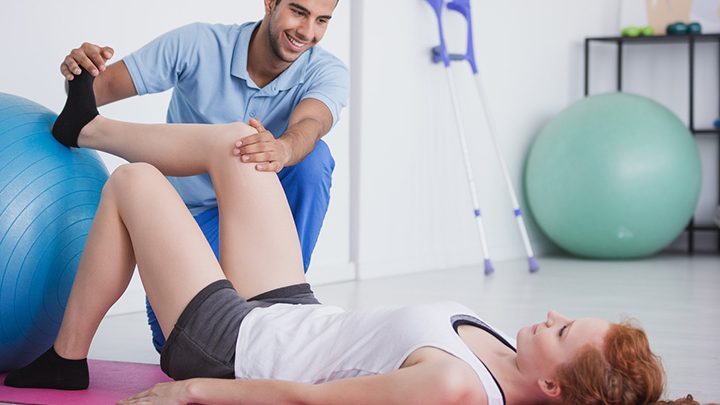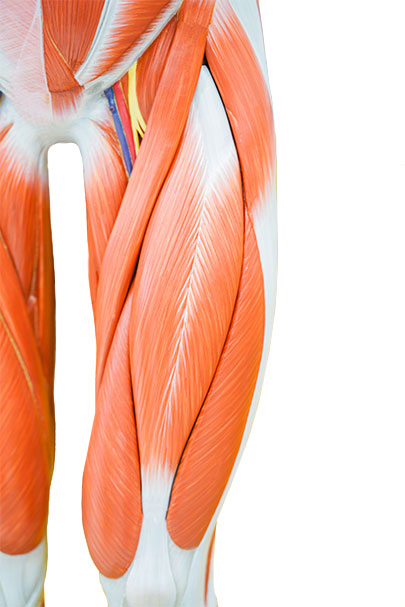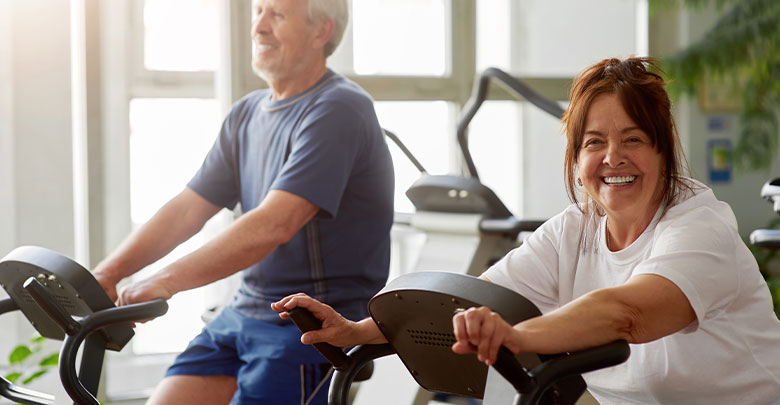4 Exercises for a Meniscus Tear
Here are 4 physical therapy exercises for a meniscus tear - quadricep, glute and knee range of motion exercises

Here are 4 physical therapy exercises for a meniscus tear – quadricep, glute and knee range of motion exercises
So you’ve torn your meniscus. It’s definitely not all doom and gloom. There are wonderful and very helpful exercises for a meniscus tear which you can do to rehabilitate your knee. Keep in mind you should always consult a physical therapist or your doctor to ensure that you’re following an approved rehabilitation plan, tailored to your needs and that it’s safe to do so.
USE the OMH exclusive code "HEALTH15" to Save 15%The objective of physical therapy is to regain normal range of motion (how far the joint can bend and straighten), to improve strength, and to return you to optimal activity levels. It has been shown that by doing rehabilitative exercises you can improve your odds of avoiding surgery altogether.
Every rehabilitation program should include these 4 basic elements of exercises for a meniscus tear. The exercises are aimed at improving strength, range of motion and improving the overall function of the knee. These exercises should not cause more than a small amount of discomfort while doing the exercises (nothing more than 3/10) and must not worsen the pain in your knee after the exercise.
Range of motion exercises for a meniscus tear
If your knee actually locks and you have a hard blocked feeling when attempting to bend or straighten your knee, you should consult a doctor or physical therapist, as you may have sustained a bigger ‘bucket handle’ tear of your meniscus which has flapped up (like a bucket handle) and is physically blocking your range of movement. However, most meniscus injuries simply result in a feeling of stiffness which you can and should gradually work and move through, and which will improve with these regular knee range of motion exercises. The goal is to restore normal and pain-free knee range of motion.
There are two range of motion exercises: Prone Hang and Heel Slides.
Prone hang
The prone hang exercise improves knee extension (straightening) range of motion. To start, lie flat on your tummy with your leg extended over the end of your bed, allowing gravity to slowly pull your knee into full extension. Hold this position for 15 to 30 seconds, and then bend your knee up. Repeat 3 times.
Heel slide
Heel slides improve your knee flexion range of motion (flexion is the ability for your knee to bend fully). To perform the heel slide exercise, lie on your back, and then slowly slide the heel of your injured leg towards your bottom, allowing your knee to bend as far as possible (you can also help the movement by holding your thigh with your hands to gently pull). Then slowly allow your heel to slide back to the straight-knee position. Repeat the exercise 10 times, moving slowly as you bend and straighten your knee.
NOTE: If these range of motion exercises cause increased knee pain, stop and check in with your physical therapist.
Quadriceps exercises for a meniscus tear
The quadriceps (quads) are a large group of 4 muscles on the front of the thigh which straighten your knee, and support the joint and your kneecap. After a knee meniscus tear or injury, you’ll mostly like need special rehabilitation to improve your quadriceps function so that your knee joint is adequately supported. Exercises to improve your quads may include the following:

Quadricep setting
- Lie on a mat your back with your knees straight.
- Press the back of the knee vertically down into the floor while tightening your quad (thigh) muscle.
- Hold this position for 5 seconds and then slowly release the contraction.
- Do 3 sets of 10 repetitions – or as many as you are able to and then gradually increase the number of repetitions
- Watch the video here
Short arc quad
- Lie on a mat on your back with your knees out straight.
- Place a rolled up towel, pillow or ball under the knee of the quad you wish to strengthen.
- Tighten your quads (top thigh muscle) and straighten your knee until your leg is fully straightened, pull your toes up too. Maintain contact of the back of your knee with the towel/pillow/ball at all times.
- Hold this straight position for 3 – 5 seconds and then slowly return to the starting position.
- Do 3 sets of 10 repetitions – or as many as you are able to and then gradually increase the number of repetitions
- Watch the video here
Mini squat
NOTE: You need to be able to bear weight comfortably in order to be able to do this exercise.
- Stand up straight , holding the back of a chair, with your feet shoulder-width apart.
- Slowly bend your knees a few inches, lowering your body while leaning slightly against the chair if necessary (do not ever go down further than your knee height!)
- Keep your feet flat, keep your kneecap in line with your second toe and do not let your knees go forwards past your toes.
- Hold this position for 3-5 seconds.
- Slowly tighten buttocks as you straighten your knees.
- Do 3 sets of 10 repetitions – or as many as you are able to and then gradually increase the number of repetitions
- Watch the video here
Glute medius exercise
The better the strength of the muscles around your hips, the better the bio-mechanics of your knee joint will be…
Clams
- Lying on your side, with your hips straight and just your knees bent.
- Keep your toes together, and keep your tummy tight
- Lift the top knee.
- Lower your knee slowly down.
- Do 3 sets of 10 repetitions – or as many as you are able to and then slowly increase the number of repetitions
- Watch the video here
Stationary cycling
Riding a stationary bicycle forms an important component of your knee meniscus tear rehabilitation program. Cycling has many benefits including:
- Improving knee range of motion – the cycling motion lubricates and mobilizes the joint, thereby improving your range of movement
- Improving muscular endurance in your legs
- Improving your cardio health, burning calories and thereby helping you to possibly lose weight (if you are also watching what you eat!) Every kilogram you lose means less stress and strain on your knee joints.
- As a non-weight-bearing exercise, it limits stress and strain through your knee and injured meniscus.
- Cycle for 20 – 40 minutes 3 – 5 times per week.

If you incorporated all the above elements into your routine, and did the above knee rehabilitation program regularly – at least 3-5 times per week – for 6 weeks you would feel remarkable improvements in your knee function, strength and pain. So good luck, there is nothing stopping you starting!
Be sure to check out our physiotherapist, Karin’s video of the best exercises to do for a meniscus injury.